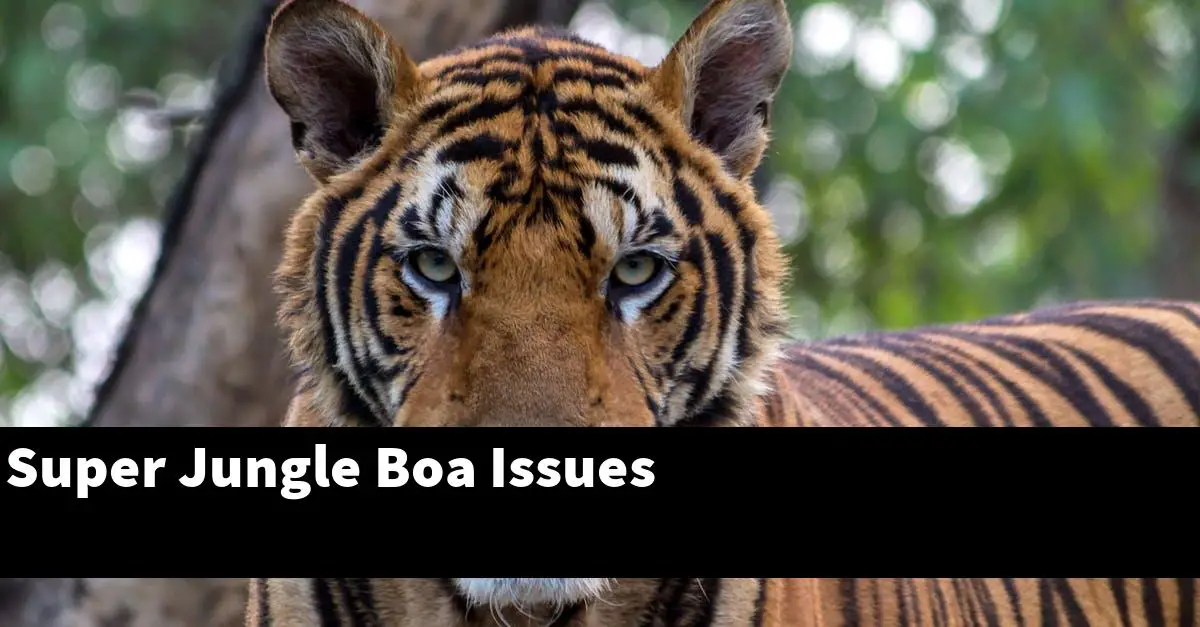Why do super jungle boas have so many issues?
The super jungle boa is a subspecies of the common boa constrictor. They are found in the rainforests of Central and South America. Super jungle boas grow to be about 12 feet long and weigh up to 30 pounds.
Super jungle boas are a subspecies of the common boa constrictor. They are found in the rainforests of Central and South America and can grow to be about 12 feet long and weigh up to 30 pounds.
They are a nocturnal species that is known for their aggressive behavior and their large size.
Table of Contents
What are super jungle boa issues?
Super jungle boa issues are typically problems that arise from the improper care of these snakes. Some of the most common problems include dehydration, malnutrition, and enclosure issues.
Dehydration occurs when the snake does not have enough water available to them, and this can lead to a number of health problems. Malnutrition can occur when the snake is not getting enough of the right kind of food, and this can also lead to a number of health problems.
Enclosure issues can include everything from the snake not having enough space to move around, to the enclosure not being properly ventilated.
What causes super jungle boa issues?
There are many potential causes for health issues in super jungle boas. Some of the most common include improper husbandry, such as inadequate cage size or poor sanitation; inadequate diets, such as lack of proper nutrition or hydration; and parasites, such as mites or ticks.
Improper husbandry is often the most common cause of health issues in reptiles, as they are very sensitive to their environment. If their cage is too small, they may become stressed, which can lead to a weakened immune system and increased susceptibility to disease.
Poor sanitation can also lead to health problems, as it can allow bacteria and other contaminants to build up, which can make your reptile sick. Inadequate diets can also cause health problems, as reptiles need a balanced diet to stay healthy. If they are not getting enough of the right nutrients, they may become malnourished, which can lead to a variety of health issues.
Parasites can also cause health problems in reptiles, as they can siphon off nutrients and cause irritation and inflammation. If your reptile has any of these potential health problems, it is important to take them to a veterinarian for proper diagnosis and treatment.
How can super jungle boa issues be prevented?
Super jungle boa issues can be prevented in a number of ways.
- First, it is important to ensure that the enclosure is properly sized for the number of snakes that will be housed in it.
- Second, the enclosure should be equipped with a hiding place for each snake.
- Third, the enclosure should be cleaned on a regular basis to remove any potential sources of food or water for the snakes.
- Fourth, it is important to monitor the snakes regularly for any signs of illness or injury.
- Finally, it is important to consult with a veterinarian who is experienced in treating reptiles if any health concerns arise.
How can it be treated?
Super jungle boa issues can be treated in a number of ways, depending on the severity of the issue. For minor issues, treatment may simply involve providing the snake with a clean and appropriate environment, and ensuring that it has a healthy diet.
More severe issues may require medical intervention, such as antibiotics or surgery. In some cases, euthanasia may be the most humane option.
What is the most docile boa?
The most docile boa is the Colombian boa. These snakes are very calm and docile, and make great pets. They are also very easy to care for, and can be kept in a small enclosure.
How big does a jungle boa get?
A jungle boa can grow to be about 6 to 8 feet in length. They are a thick-bodied snake with a large head. The average weight of a jungle boa is about 10 to 15 pounds. Jungle boas are found in the tropical rainforests of Central and South America.
How many boa morphs are there?
There are many different types of boa morphs, and new ones are being created all the time. Some of the most popular morphs include albino, anerythristic, and piebald.
Albino boas have a white or cream-colored body with pink eyes. Anerythristic boas lack red pigmentation and appear green, blue, or silver. Piebald boas have large patches of white or light-colored scales on their bodies.
Summary
Super jungle boas are not typically aggressive, but they can be when they feel threatened. If you are handling your super jungle boa and it begins to act aggressively, immediately put it back in its enclosure. Super jungle boas are also known to be escape artists, so make sure their enclosure is secure.

